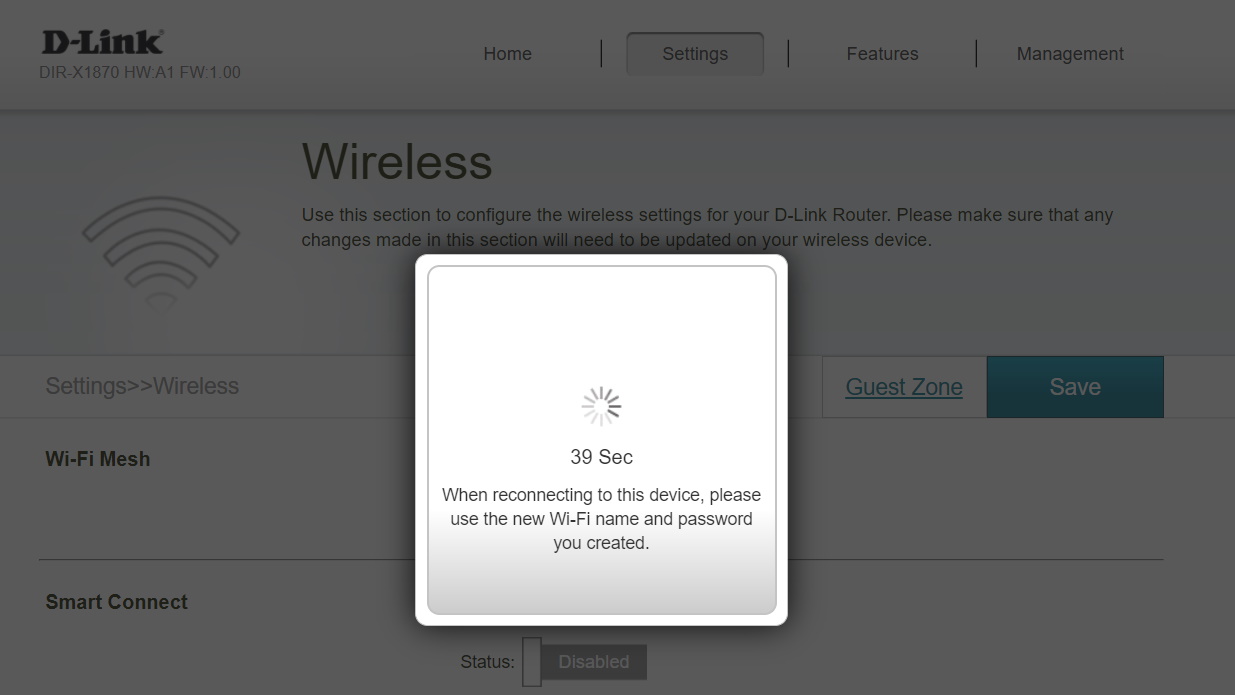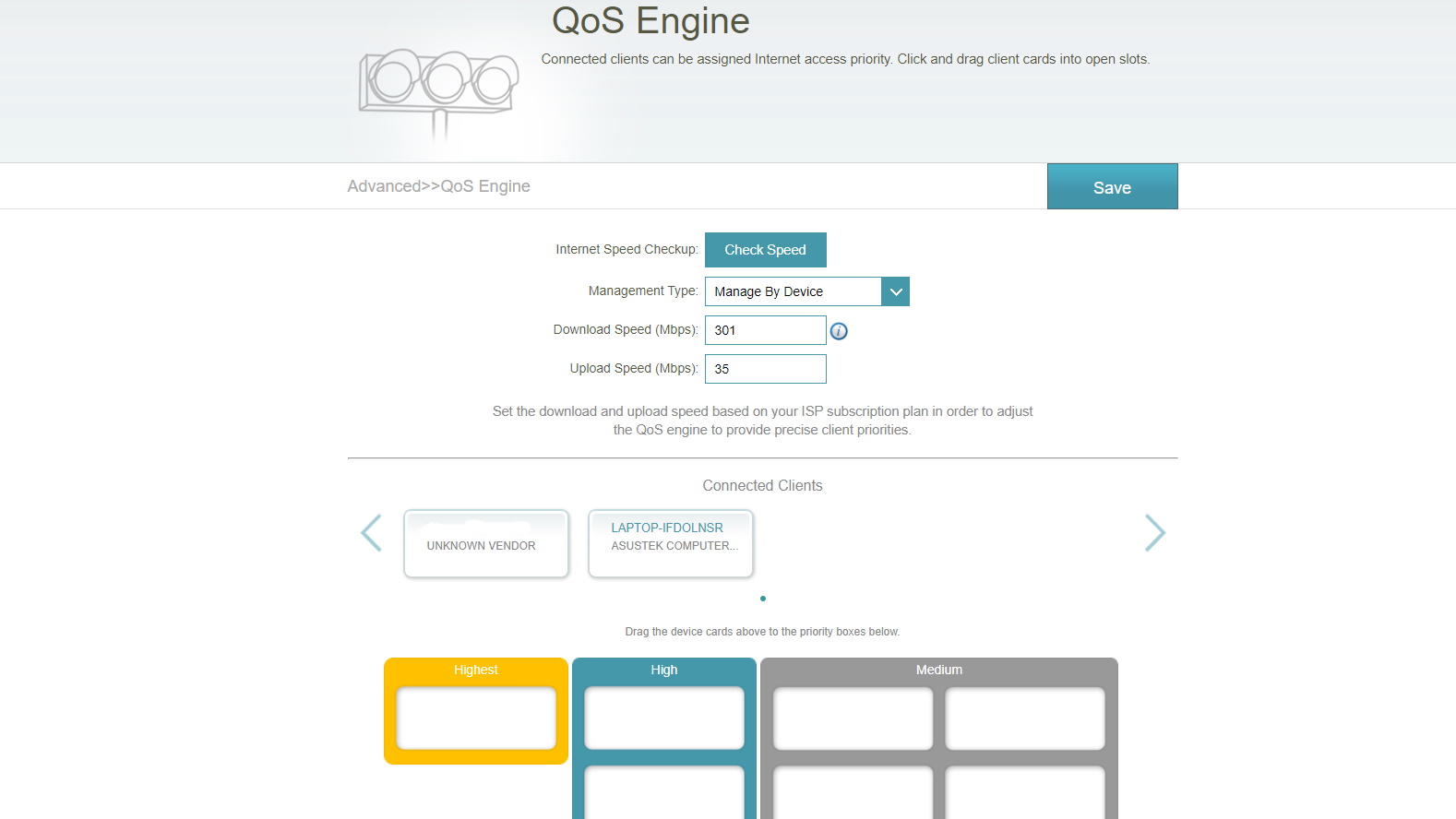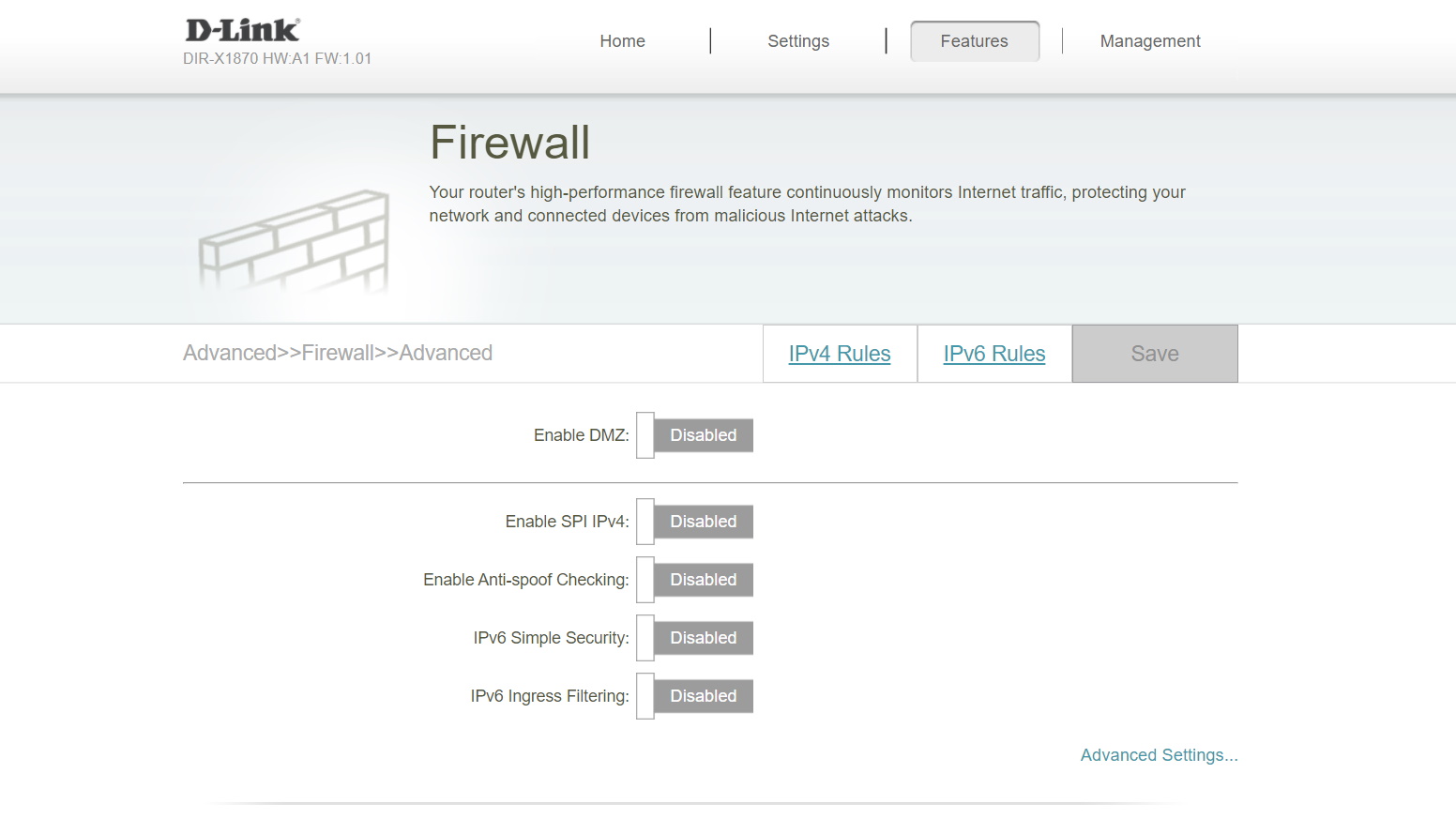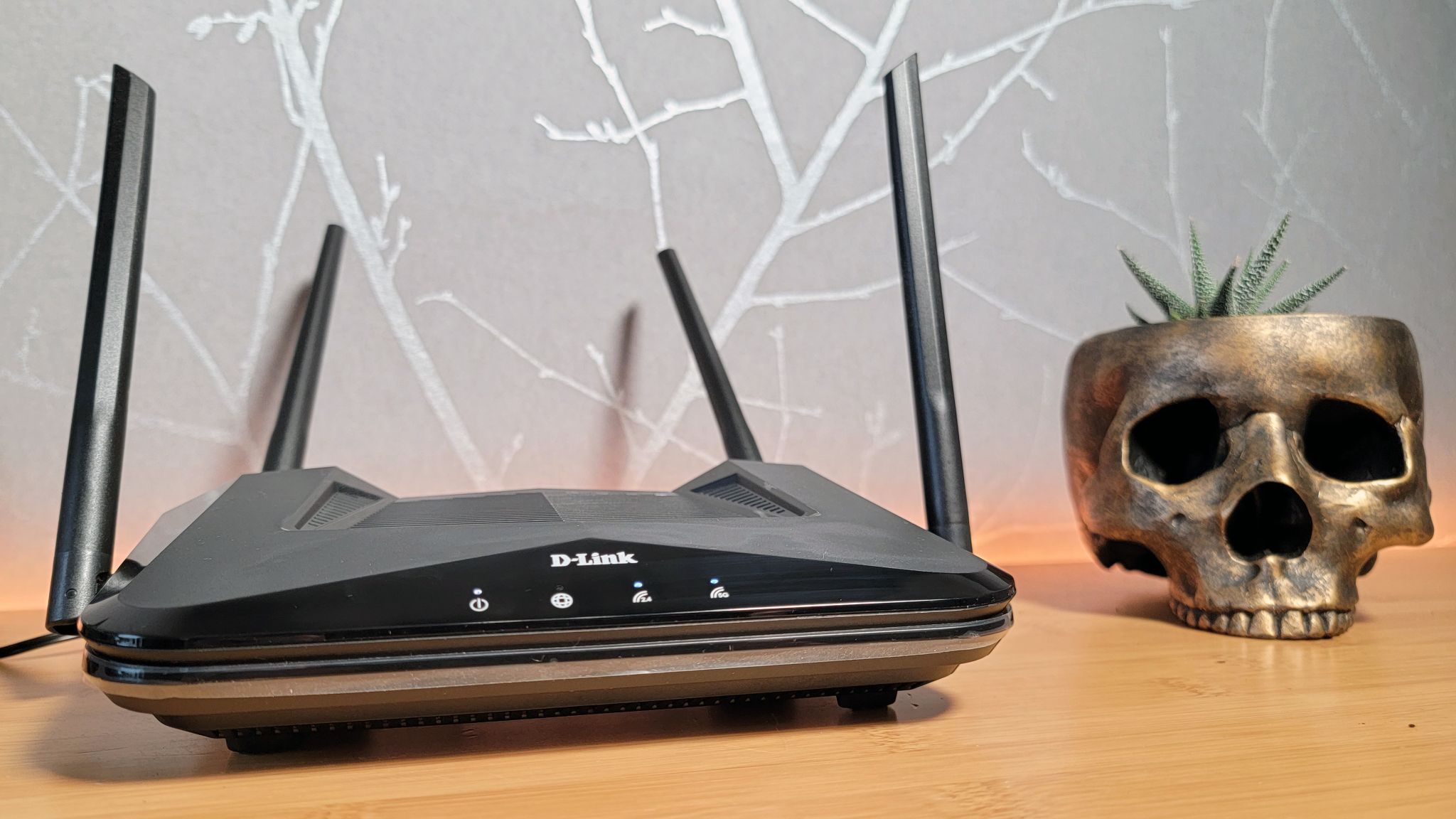Tom's Hardware Verdict
D-Link’s entry into the budget Wi-Fi 6 space delivers on the fundamentals, but there are some shortcomings as well, like a lack of USB and poor performance for legacy 2.4 GHz.
Pros
- +
+ Value priced
- +
+ 5 GHz gaming performance
- +
+ Wi-Fi 6
Cons
- -
- 2.4 GHz gaming performance is dismal
- -
Boring exterior and no USB
- -
Limited number of Ethernet ports
- -
Configuration reboots are painfully slow
- -
Budget security
Why you can trust Tom's Hardware
When we think of Wi-Fi 6 networking gear, we tend to associate it with higher end, cutting edge products. However, as the standard has been out for some time now, it is refreshing to see that Wi-Fi 6 is now coming to some lower-end, budget-focused devices. Not everyone has or wants to spend hundreds on their router. To that end, today we are assessing the D-Link EXO AX AX1800 (DIR-X1870) router. Selling for about $99 on Amazon and packing Wi-Fi 6, we had more than a passing curiosity to see how much performance and features it gives up to its more expensive competition.
Design of the D-Link EXO AX AX1800 (DIR-X1870) Wi-Fi 6 Router
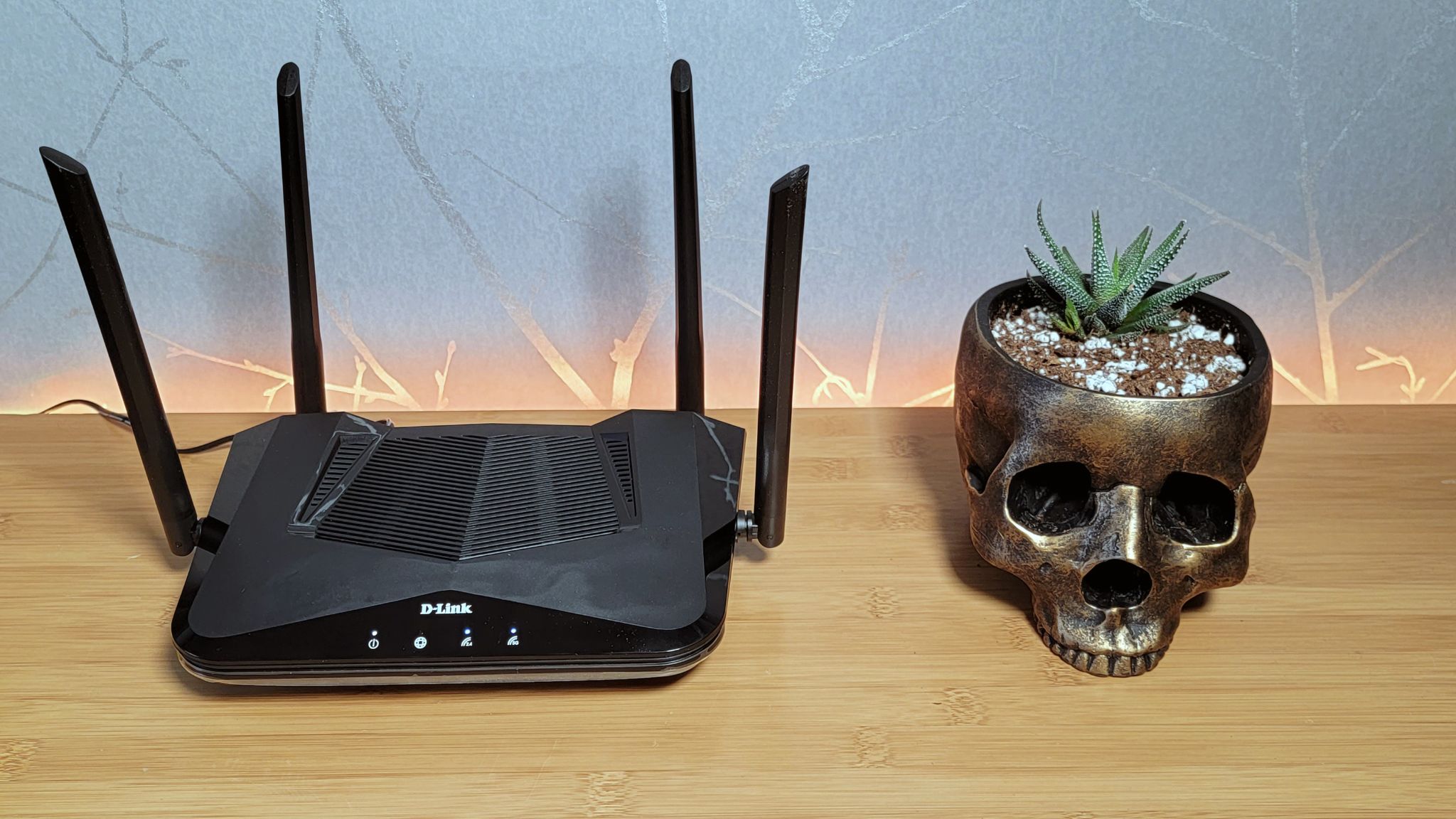
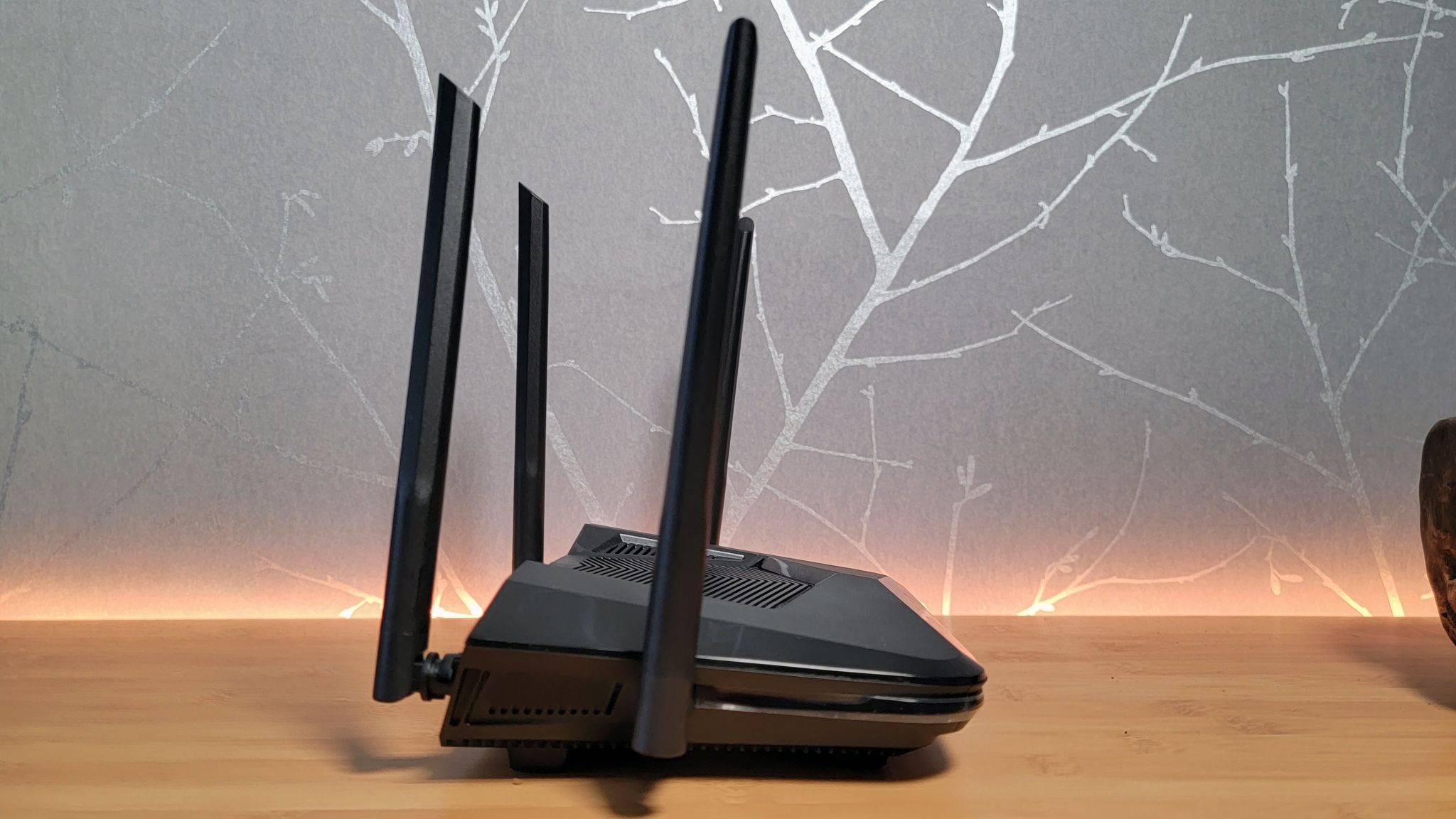
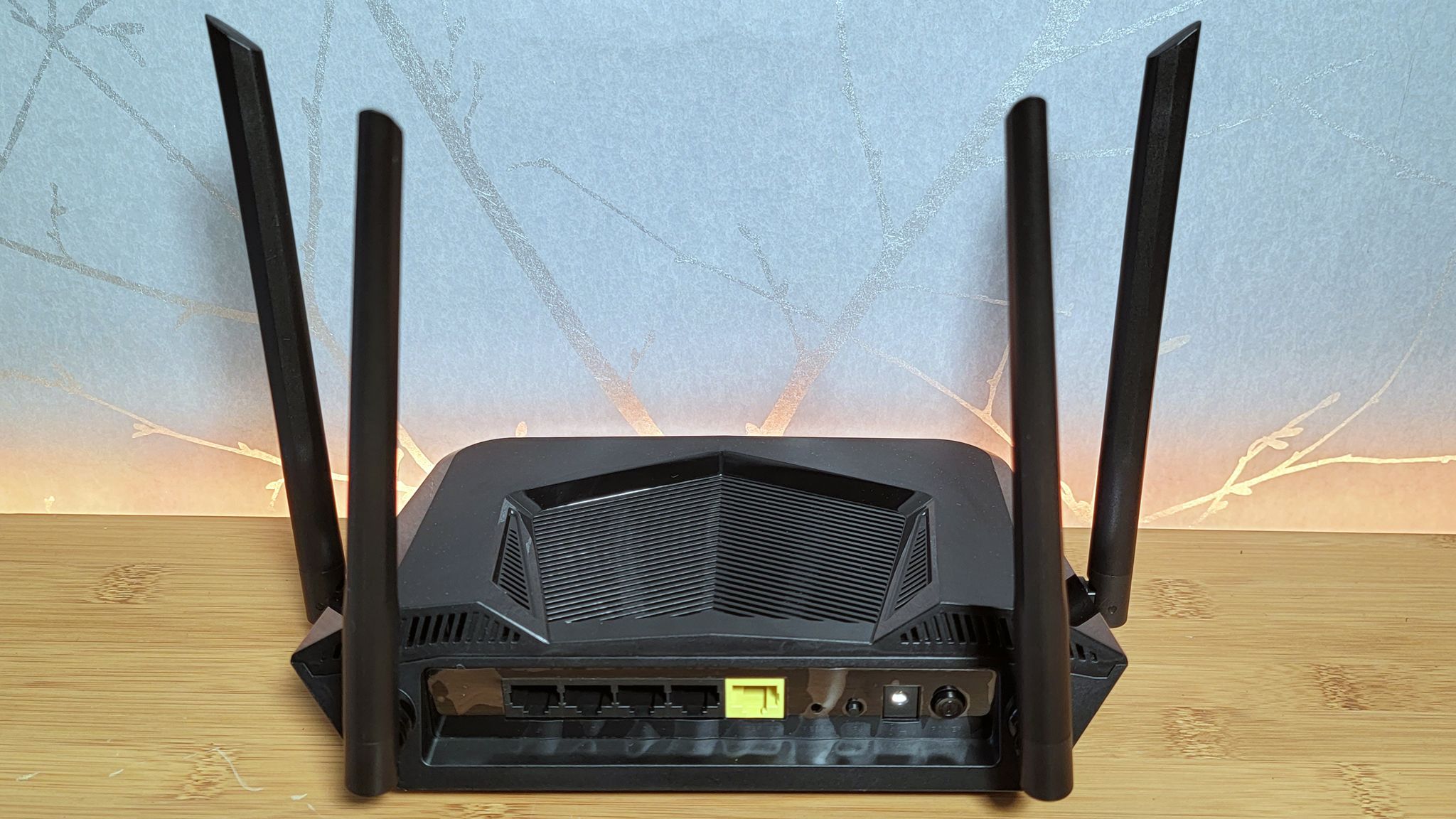
Looking at the DIR-X1870, it's immediately clear that style isn't the selling point. This is a horizontal router, with a matte and glossy black plastic exterior. It has four antennas that can be positioned. Overall, it is not particularly attractive, but not really offensive either.
The top has some cooling vents, and four status LEDs: power, internet, 2.4 GHz and 5 GHz. For those who value simplicity and the basics, this is probably OK. But those who want something more advanced are likely to be disappointed.
Specifications of the DIR-X1870 Router
The real news here is budget Wi-Fi 6. Ok, at this price we can’t expect anything spectacular, (and we don’t get it), with a dual band configuration. There is a single 2.4 GHz frequency with a max throughput of 600 Mbps, and a 5 GHz frequency that has a max throughput of 1200 Mbps; both MU-MIMO and Smart Connect are supported. There aren't any USB ports on this router, which is a bit surprising, but it does support a Guest network.
Continuing the utilitarian theme, there are four Ethernet ports and a single WAN port on the rear -- they are all Gigabit. The hardware specs are also pretty plain, with 256 MB of SDRAM, 128 MB of flash memory and a Broadcom 1.5 GHz quad-core processor.
Setup of the D-Link EXO AX AX1800 (DIR-X1870) Wi-Fi 6 Router
Setup was pretty simple for the DIR-X1870. We chose to get it going via the browser, but it can also be done via a smartphone app. The setup was mostly straightforward, and similar to most other routers. The notable aspect of the setup is that each and every configuration change needed for this router takes a full 60 seconds to accept the change. For those who have multiple settings to configure, this adds significantly to the time required to get your network up and running how you want it.
Get Tom's Hardware's best news and in-depth reviews, straight to your inbox.
The other annoyance is centered around the Smart Connect, a feature that allows a device to connect to a single SSID, and then the router to decide if the client will connect to either the 2.4 GHz or the 5 GHz band. While some novice users may prefer this method, the problem is that we would rather have manual control of what band we connect to. We not only had to disable the Smart Connect via a toggle, but then we also had to rename the networks, as by default both bands get assigned the same SSID. This required an annoying workaround, and is a sequence we have not encountered previously on any other routers we've tested.
Features of the D-Link EXO AX AX1800 (DIR-X1870) Wi-Fi 6 Router
Certainly, a differentiating point between high-end routers, compared to the budget models, is the feature set. Those looking for things like integrated WTFast and guidance for connecting to the fastest gaming server should look to something more expensive.
The D-Link DIR-X1870's feature limits are immediately apparent in the Quality of Service settings, which lack the granular control of other gear. As seen in the screenshot (see how to take screenshots in Windows) above, and seen in other D-Link products previously, you simply get a list of ‘Connected Clients’ that can be designated into three tiers: Highest, High and Medium -- although technically there is a fourth tier of clients that don’t get designated as all, and by default are given the lowest of priority. There is also an integrated speed test, which did successfully quantitate the speed of our home broadband connection.
Our concern when we see this kind of per-device QoS is that there can be no QoS by the traffic type, particularly for gaming or video streaming packets. That said, as you'll see shortly, gaming traffic did get prioritized in our testing.
Other features include Parental Controls and a Quick VPN that can do L2TP over IPSec. We also like the automatic firmware upgrade, and that it can be scheduled to be done daily.
Security of the D-Link EXO AX AX1800 (DIR-X1870) Wi-Fi 6 Router
The DIR-X1870 router has an integrated firewall, and this includes some security functions such as enabling a DMZ, and Anti-spoof checking. However, anything more advanced, and the DIR-X1870 misses the mark. There is no network-level antivirus or other security measures provided.
Performance of the D-Link EXO AX AX1800 (DIR-X1870) Wi-Fi 6 Router
| 2.4 GHz near | 2.4 GHz far | 5 GHz near | 5 GHz far |
|---|---|---|---|
| 121.2 Mbps | 98.3 Mbps | 698.7 Mbps | 145.1 Mbps |
On our throughput testing, we found a mixed bag with our Wi-Fi 6 test notebook. Although the Wi-Fi 6 helped the DIR-X1870 on the 5 GHz near test with a throughput of 698.7 Mbps, it quickly dropped when 30 feet away to 145.1 Mbps. Also, the 2.4 GHz was just mildly faster than a Wi-Fi 5 router we tested on the same setup, although the near test of 121.2 Mbps and far result of 98.3 Mbps falls short of anything notable.
| Testing Configuration | QoS | FRAPS Avg | Max | 8k Dropped Frames | Pingplotter Spikes | Latency |
|---|---|---|---|---|---|---|
| Ethernet | no | 127.2 | 150 | n/a | 0 | 59 |
| Ethernet + 10 8k videos | no | 69.1 | 118 | 45.80% | 4 | 178 |
| Ethernet + 10 8k videos | yes | 123.2 | 159 | 1.98% | 1 | 168 |
| 5 GHz | no | 123.4 | 149 | n/a | 0 | 249 |
| 5 GHz + 10 8k videos | no | 78.7 | 128 | 37.70% | 2 | 89 |
| 5 GHz + 10 8k videos | yes | 122.2 | 147 | 11.90% | 1 | 86 |
| 2.4 GHz | no | 133.4 | 164 | n/a | 0 | 118 |
| 2.4 GHz + 10 8k videos | no | 31.6 | 109 | 54.90% | 10 | 123 |
| 2.4 GHz + 10 8k videos | yes | 93 | 121 | 32.7 | 0 | 116 |
The round of congestion testing also told an interesting story. Starting with the wired tests, with no background congestion, the FPS on our test game, Overwatch, gave us 127.2 FPS with no PingPlotter spikes (which shows appropriate traffic management), with an in-game latency of 59 ms on our 300/35 Mbps cable connection that would be fine for even serious gamers. But adding in the congestion of ten 8k videos, with no device prioritized, shows us the frames dropped by roughly half to 69.1 FPS, with a stuttering minimum frame rate of 4, plus the development of four PingPlotter spikes to further confirm the congestion.
Also, the video streaming had a dropped frame rate of 45.8%, which is pretty unwatchable. And in-game latency rose to 178 ms. Running the same test, but putting our gaming laptop to the highest priority, showed that prioritization works, as the FPS returned to 123.2 FPS, the dropped frames for the video streaming was under 2%, and there was but a lone PingPlotter spike.
Running the same tests while connected on the 5 GHz frequency mirrored the wired results, except for the higher dropped frame rate of the video streaming, but a lower in-game latency compared to the wired test results. Alternately, on the 2.4 GHz tests when the congestion was turned on, we saw a significant drop in the frame rate to 31.6 FPS. This only partially recovered when the gaming laptop was put to the highest priority. The router was also overwhelmed here, as it developed 10 PingPlotter spikes and a high dropped frame rate on the video streaming.
Pricing and Conclusion
Looking at the price of the DIR-X1870 is where things start to make sense, both for consumers and D-Link. Sure the feature set is lacking, and the design is hardly a work of art. However, a lot can be forgiven when we consider the street price is under $100, making it an even better deal than the MSRP of $119. This puts this router clearly into the budget category. And at this price point we consider this router a good value -- as long as you have the right expectations.
The strong points are better-than-expected QoS for gaming when wired or on 5 GHz and the support for Wi-Fi 6 at an affordable price point that competes with older Wi-Fi 5 gear. For those who can overlook the lack of USB ports and the minimal integrated network security, and the lackluster 2.4 GHz performance (to put it mildly), the DIR-X1870 offers a solid performance value for the dollar. But those who want granular controls and more throughput for gaming on a crowded network should probably spend more on a router with better bandwidth and more features.

Jonas P. DeMuro is a freelance reviewer covering wireless networking hardware.
